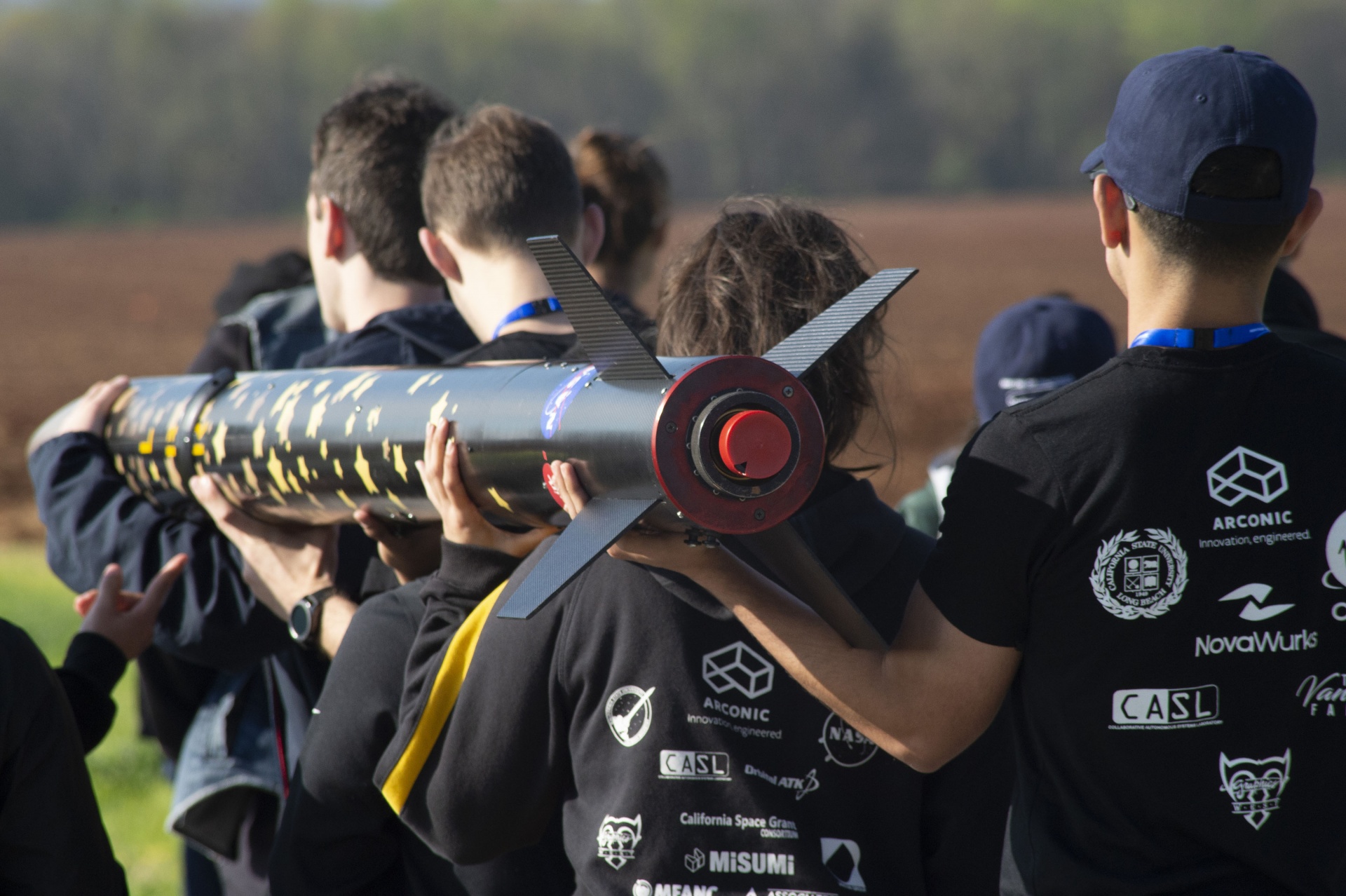Long Beach Rocketry team scores fifth place in competition
Cal State Long Beach engineering students who spent much of the past school year working on a rocketry project inspired by NASA’s R&D practices claimed a Top Five finish in a national competition after launching their rocket more than 4,500 feet into the sky.
The student team, Long Beach Rocketry, also deployed an unmanned aerial vehicle, named “Phoenix,” from their rocket’s payload bay after their rocket’s landing.
“That was when I really had the best feeling that I had throughout my entire experience,” Long Beach Rocketry lead engineer Rachel Lauf said.
Long Beach Rocketry, which had more than 30 student members for the 2018-19 school year, achieved its successful launch during the 2019 NASA Student Launch finale in early April at Marshall Space Flight Center in Alabama. The competition tested students’ abilities to plan a rocket launch, develop a vehicle that could explore a world beyond earth, and work together in a setting analogous to a government or private space concern.
NASA accepted nearly four dozen college teams’ proposals for the 2019 NASA Student Launch.

“There are always disagreements, always conflicts, but they work together as a team,” faculty advisor Praveen Shankar, associate professor of mechanical and aerospace engineering.
Learning how to solve problems in a group setting is even more valuable than the technical skills practiced over the course of the Student Launch process, he said.
Cal State Long Beach team has recorded Top Five finishes in each of the last two years, posting a fourth-place finish the previous year.
“We are very proud of the team’s efforts,” College of Engineering Dean Forouzan Golshani said.
“With several space companies in the vicinity—including SpaceX, Virgin Orbit and Rocket Lab—endeavors such as this prepare our students to take on the real-world challenges once they join the work force.”
For the 2019 Student Launch, NASA demanded student engineers figure out how to assemble a solid-fuel rocket capable of launching to an altitude between 4,000 and 5,500 feet before parachuting down.
The missions continued after students’ rockets completed their descents. NASA let teams choose to build their rockets to carry either rovers or unmanned aerial vehicles. Long Beach Rocketry took the aerial option, and teams doing so needed to show their creations were able fly away from their rocket’s landing site and deposit a simulated navigational beacon in a designated drop zone.
Phoenix, a small quadcopter, performed well enough to earn Long Beach Rocketry third in the Payload Design.
Participating in the NASA Student Launch is a months-long commitment. Teams participating in the most recent competition had to send their plans to NASA by mid-September, and also bore responsibility to complete and present detailed design review reports on their progress before launch. The competition’s design review process is itself intended to expose participants to the NASA’s own methods.
“If any of us were to go work at NASA, we’re already familiar with the design review and process,” Lauf said.





